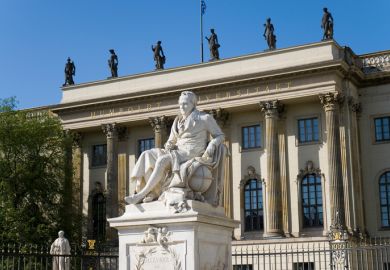In this discouraging but thought-provoking book on whether there is hope for democracy in China, Bruce Dickson concludes that most Chinese are content when their personal incomes rise. Few want Communist rule to end, and they agree with the Chinese Communist Party that dissidents endanger state stability. There are no Chinese Mandelas, Havels, Sakharovs or Aung San Su Kyis, “no one in China who comes close to their stature, no one who enjoys widespread public support, no one who is seen as the symbol of a democratic sentiment within China”. Even China’s only winner of the Nobel Peace Prize, Liu Xiaobo, now serving an 11-year sentence for championing Western-style democracy, is either unknown or regarded “with limited sympathy within China”.
What all this represents, Dickson argues, is a refutation of modernisation theory, which holds that as an autocratic country’s people become richer they demand Western-style democracy. Drawing on large-scale surveys in 2010 and 2014 and focus-group interviews, Dickson found that most Chinese, while uninterested in their country’s GDP, are conscious of rises, however small, in their incomes, which they believe show that their leaders are looking after them. They feel this way even though they know that improvements in education and healthcare are unevenly distributed, and that many officials are corrupt.
President Xi Jinping, an ardent admirer of Mao Zedong and ever on the lookout for disloyalty whether in open dissent or on the internet, uses repression – thoroughly outlined here – relatively sparingly, while also paying attention to focus groups and hundreds of non-governmental organisations to discover what is on his people’s minds. What cannot be allowed, he makes clear, are open calls for Western-style democracy, an end to Party rule, or struggles for ethnic freedom, notably among the Muslims of Xinjiang and Tibetan Buddhists.
Among the post-Tiananmen strategies the Party has employed for securing not just obedience but a considerable degree of approval, as long as people feel satisfied with their individual economic well-being, are Confucianism and nationalism. Confucianism, much condemned in Mao’s day, has now been invoked to justify the rule of elders in the interests of “harmony”, while nationalism reminds Chinese that their country, once great, was brought low by weak rulers and foreign imperialists. Hence the wide support for anti-Japanese policies, China’s encroachment into seas far from its shores, and the dislike of Western policies urging genuine democracy, which are generally seen as intrusions into Chinese sovereignty. According to Dickson’s polling, while many Chinese insist that they live in a democracy, a greater number have no idea what democracy is.
Dickson’s polling and interviews make the analysis particularly interesting, although citations to Chinese sources that deal with how Chinese feel about their government are strikingly absent. It is common abroad to make fun of the Party’s attacks on foreign criticism as “hurting the feelings of the Chinese people”. But in both of Dickson’s polls, more than 80 per cent of respondents felt that “when other people criticize China, it is as though they are criticizing me”.
Jonathan Mirsky was formerly associate professor of Chinese, history and comparative literature at Dartmouth College in the US, and former Far East editor of The Times.
The Dictator’s Dilemma: The Chinese Communist Party’s Strategy for Survival
By Bruce J. Dickson
Oxford University Press, 368pp, £18.99
ISBN 9780190228552
Published 28 July 2016
POSTSCRIPT:
Print headline: Pacify the People a yuan at a time
Register to continue
Why register?
- Registration is free and only takes a moment
- Once registered, you can read 3 articles a month
- Sign up for our newsletter
Subscribe
Or subscribe for unlimited access to:
- Unlimited access to news, views, insights & reviews
- Digital editions
- Digital access to THE’s university and college rankings analysis
Already registered or a current subscriber?




